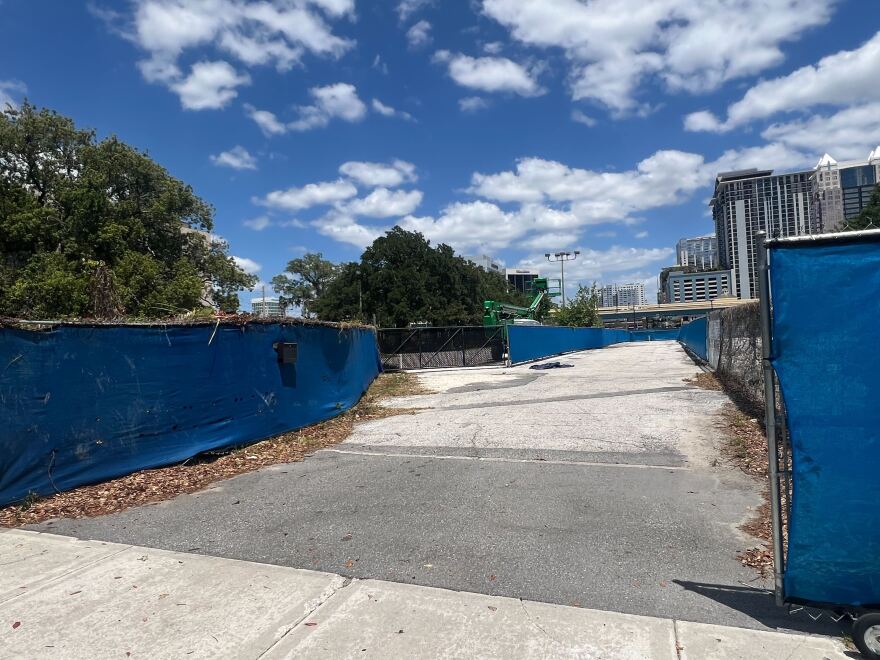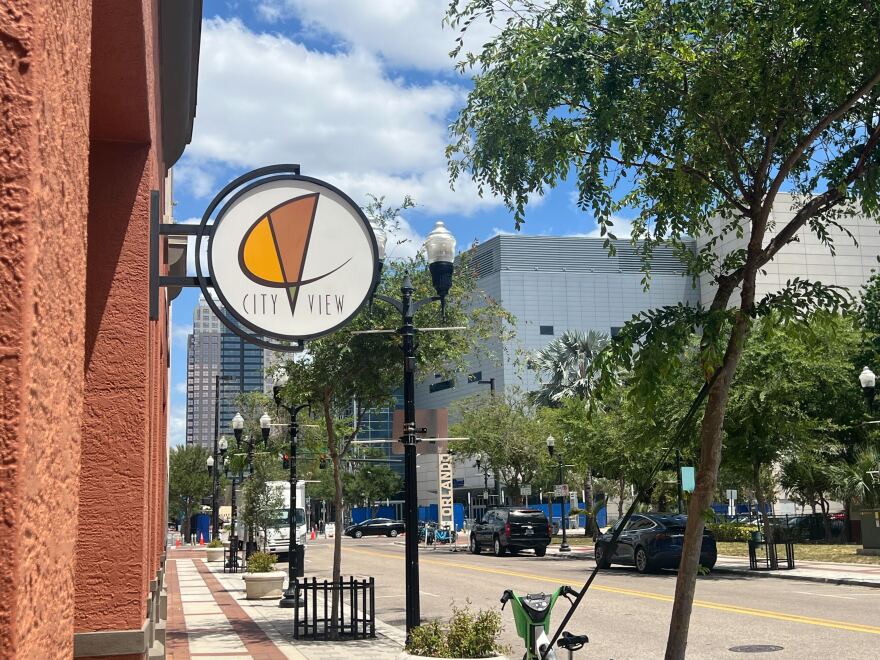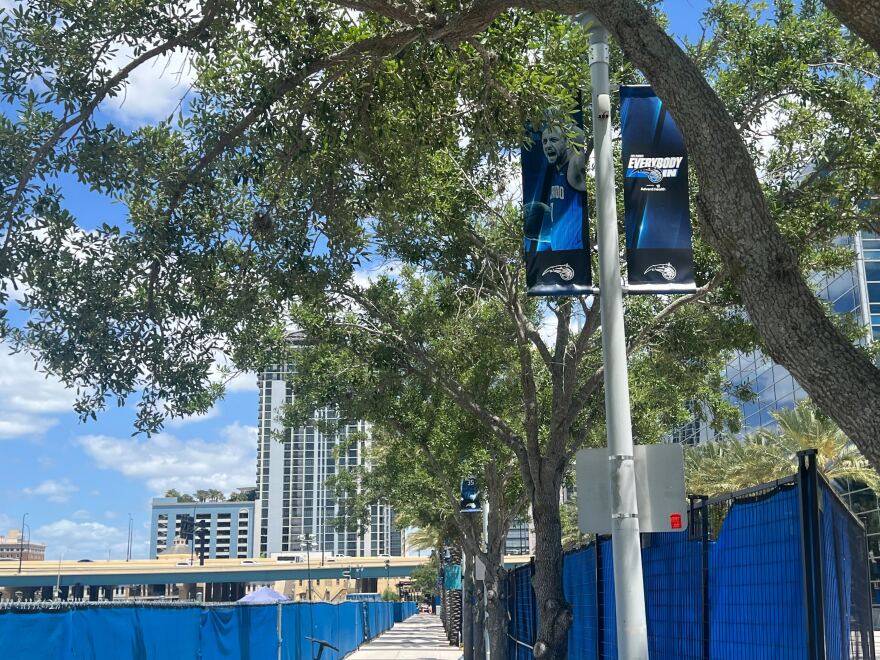Affordable Housing at Westcourt
A new sports and entertainment district, called Westcourt, is expected to begin construction at the end of 2024 next to the Kia Center in downtown Orlando.
The Orlando City Council, last week, approved a $40 million tax break for Westcourt and plans to put $2.5 million towards the $500 million project.
The first-phase will include shops, restaurants, a parking garage, event venue, hotel, and more than 270 residential units.
Out of those 270 units, 10 will be set aside for affordable housing for residents who earn 80% or less of the area median income, which is $37,330 for individuals, according to the U.S. Census Bureau.

Given the ongoing need for affordable housing in Orlando, Mark Dorosin, law professor and director of legal clinics at Florida A&M University’s College of Law, said the fact that so few units will be attainable for lower income households is a missed opportunity for the city.
“No question what we'll see with developments like this, and what we've seen in other cities, is extraordinary pressure on existing residents,” he said. “There is an increase in property tax and property tax values, which puts pressure on existing homeowners. That is the first step in the process of gentrification.”
In response to those pressures, Dorosin said other cities with large-scale downtown developments like Westcourt have adopted community benefit agreements.
“Which are actually contracts with the developer that mandates certain benefits be provided directly to the impacted communities and to offset those impacts,” he said. “Those community benefits can include things like specific affordable housing targets.”
Dorosin points to Nashville as a good example of community benefits agreements.
“In Nashville in 2018, the city wanted to build a stadium and mixed use supporting development. The residents and advocates were able to get a community benefits agreement that guaranteed 20% of all the housing built would be affordable for low wealth, families and residents,” he said. “In addition, within that 20%, a certain amount of units were required to be three bedrooms so that they could be accessible to families. We didn't get any of that in this approval.”
Dorosin said community benefits agreements have also been used to guarantee jobs for local residents with living wage requirements, investment into the community, and more.
Another option is a Low Income Tax Credit project like the City View apartments located in between the Kia Center and the Inter&Co Stadium in downtown Orlando.
Dorosin said half of the units at City View are designated affordable, with the property’s rent restrictions continuing until 2050.

Gentrification
Rent is already high in Central Florida, with the average rent for a one bedroom apartment just over $1,900 in Orlando, according to Rent Cafe.
If long-term residents of downtown Orlando are pushed out because they can no longer afford housing, Dorosin said those houses get lost to the community.
“If they get redeveloped into more expensive either apartments or condos, what you're losing is really the character and identity of these neighborhoods, some of which are the historic African American neighborhoods here in Central Florida,” he said. “We See it in Paramore, Pine Hills, Washington Shores, and Eatonville. There is intense pressure from developers to maximize the value of these properties, and that means displacing these residents.”

While walking around the area designated for Westcourt, Dorosin said you can see what gentrification looks like.
“If you look back towards the Kia Center you see a lot of newer development. If you look west, continuing down Church Street, you start to see the older, traditional African American neighborhood, which started back there originally, but we've seen the development come, across I4 and proceeding westward, further pushing into the Paramore neighborhood,” he said.
Dorosin believes the new sports and entertainment district could further push newer development into historic Black neighborhoods.
“That's the way you see development go; it has a geographic element to it. If you think about where the Paramore neighborhood originally started and where it is now, what you see is that developers are looking west where the properties are more affordable, and where there is less likely to be organized opposition to development,” said Dorosin.
Community Needs
The city of Orlando will put $2.5 million toward Westcourt, but Dorosin doesn’t think there is a need to invest public money in private businesses.
“I know the reason why cities do it is because they feel like they're in this competition with other cities, certainly when it comes to things like stadiums,” he said. “There is certainly a sense, and I think city leaders believe sincerely, that this is an investment that will bring more resources back into the community through the tax dollars that will eventually be collected many, many years from now.”
Dorosin said the problem with that is it’s a municipal trickle down model.
“The idea is we're going to give public money away to these very wealthy developers and owners, and eventually, the benefits will slowly come down to the community. What we know is, that's just not realistic,” he said. “I'm not sure any of it actually trickles down to the people who need it and whatever does, if it does, it's minimal, and it doesn't get to the kind of more institutionalize issues that that our community and others have, like access to affordable housing or the impacts of gentrification.”
When the vote was taken to approve the tax break for Westcourt, the District 5 Orlando City Council seat, which represents the area where the development will be located, was vacant.
“The residents didn't even have their elected representative to identify their needs or their goals are their priorities,” said Dorosin.
There is ongoing concern about continuing redevelopment in downtown Orlando happening in spite of the community's needs, not because of them, or in an effort to address them, according to Dorosin.
“ I know there have been a lot of concerns about the potential expansion of Camping World Stadium, that was the travel of money that was approved for that,” said Dorosin. “A lot of the residents in that area are concerned about what does that mean if there's more people coming into the community for events, and how will those impacts be addressed.”
Dorosin said it’s important to get the community’s input on developments like Westcourt before they’re approved, but even though Orlando has already approved the new sports and entertainment district, it’s not too late for the community to weigh in.
“I think there's going to be a lot of interim decisions made as this project starts, and I think there is every reason to engage the community in every step of that process,” said Dorosin. “I think it is not only important to serve the needs of the community, but also it's a way of rebuilding the trust between the local government and the community, which often feels like its interests have not been considered.”






